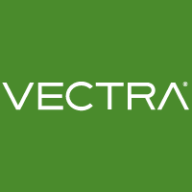

Vectra AI and Trend Vision One compete in the advanced cybersecurity platform category. Vectra AI seems to have the upper hand in reducing alert fatigue and providing comprehensive visibility into attack lifecycles, whereas Trend Vision One excels in data aggregation across security layers and centralized management.
Features: Vectra AI effectively reduces alert fatigue by consolidating alerts into single incidents, enhances threat prioritization with accurate risk scoring, and provides full visibility into attack lifecycles. Trend Vision One offers strong integration with platforms, centralized management, and a unified view of threats, excelling in data aggregation and insights into attack chains.
Room for Improvement: Vectra AI could improve integration compatibility with other formats and tools, enhance host visibility, and manage alerts more flexibly. Trend Vision One requires better handling of excessive false positives, stronger automation capabilities, and improvements in third-party integration and pricing structure.
Ease of Deployment and Customer Service: Vectra AI is praised for its robust deployment and excellent customer service, offering responsive support teams that ensure smooth operations. Trend Vision One offers flexible deployment options and strong technical support, with positive customer service reviews for assisting users effectively.
Pricing and ROI: Vectra AI is a higher-cost option with a complex licensing model yet delivers significant ROI through enhanced security operations. Trend Vision One offers a flexible, credit-based pricing structure that allows for tailored solutions, delivering considerable ROI while catering to different customer preferences.
Trend Vision One has improved our ROI by 30 percent.
Thankfully, we also had cyber security insurance, and the insurance covered the incidents because, through Trend Micro and the implementation of the solution, along with the data it provided, we were able to demonstrate what had happened.
The email filtering system paid for itself within a year.
It's not just about high-level support with the chatbot; rather, when an issue occurs, we have the experts on-site and ready to respond swiftly, which is crucial.
The engineers are not readily available.
To improve support, the company should streamline communication and reduce response times.
The support is quite reliable depending on the service engineer assigned.
I’d give scalability a 10 because nearly everything is integrated.
We found that it scales easily.
Its scalability is very good as we can work with it flexibly.
The stability is very high.
The deployment can be complex, and we'd like an easier process, especially when integrating with on-prem and cloud environments.
For XDR threat investigation, there is not enough documentation about how to search for different keywords.
There is increasingly a blending of the traditional OT world, which requires a specific focus, as OT devices often don't use standard Ethernet protocols and similar technologies.
You need to have a Linux server, and from the Linux server, you must perform AI tasks, and there is a lot to be handled in the back end.
Neither Vectra nor Darktrace have a function like a status health check on my log sources and traffic sources.
Trend Vision One offers a competitive price-to-value ratio.
Trend Vision One is an expensive product.
The pricing is fair and not on the higher side.
Vectra is cheaper in terms of pricing and features compared to Darktrace.
It is very acceptable when you compare it with Darktrace, for example.
The most important features of Vision One include visibility, AI integration, attack pattern analysis, predictive analytics, and centralized visibility and management across protection layers.
The most critical feature of Vision One is that it gives us a single console for threat management.
Its ability to identify unmonitored endpoints and perform log inspection, which establishes operational baselines and detects anomalies, proves invaluable for threat identification.
There are extensive out-of-box detection capabilities.


Trend Vision One offers comprehensive protection for endpoints, networks, and email with centralized visibility. It is valued for its attack surface management, real-time threat detection, integrated management, ease of deployment, and user-friendly interface.
Trend Vision One provides a sophisticated security platform combining endpoint, network, and email protection with features like virtual patching and advanced AI capabilities. Its centralized management and integration with platforms like Office 365 and Azure make it an attractive option for organizations needing streamlined workflows and efficient risk management. While it boasts robust integrations and ease of use, enhancements are needed in reporting, tool integration, and reducing false positives. Users call for better support infrastructure, faster response times, and improved threat intelligence capabilities. Despite some complexity, its AI and ML features significantly enhance threat detection and response.
What Features Define Trend Vision One?
What Benefits Should Users Look For?
Trend Vision One is implemented in industries that require endpoint protection, ransomware defense, and incident response, being flexible for both on-premises and cloud environments. It is used to monitor servers, networks, and endpoints, providing features like email protection, behavioral detection, and threat visibility. Organizations benefit from AI and ML, improving their security posture and response capabilities.
Vectra AI is used for detecting network anomalies and potential malicious activities, providing visibility into network traffic and enhancing threat detection across environments.
Organizations deploy Vectra AI mainly on-premises with additional cloud components. It helps with compliance, incident response, security monitoring, detecting insider threats, and correlating network events. Vectra AI captures and enriches network metadata, provides detailed dashboards, reduces false positives, and supports cross-environment behavioral analysis to enhance threat detection and prioritization. While valued for its high accuracy and alert aggregation, it has room for improvement in UI/UX, packet management, and integration with SIEMs and other tools. It is noted for expensive pricing and limited proactive threat response features.
What are Vectra AI's most valuable features?In specific industries, Vectra AI is deployed to monitor complex networks and alleviate challenges in threat detection. It is particularly effective in sectors requiring stringent compliance and security measures, offering insights and capabilities crucial for protecting sensitive data and maintaining operational integrity.
We monitor all Network Detection and Response (NDR) reviews to prevent fraudulent reviews and keep review quality high. We do not post reviews by company employees or direct competitors. We validate each review for authenticity via cross-reference with LinkedIn, and personal follow-up with the reviewer when necessary.